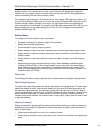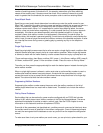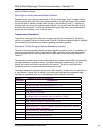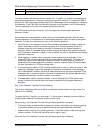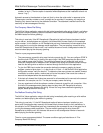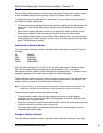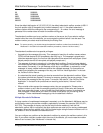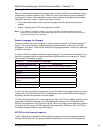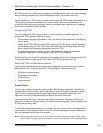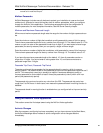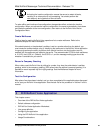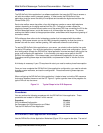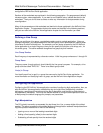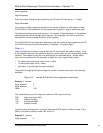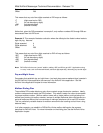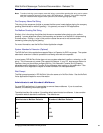
Mitel NuPoint Messenger Technical Documentation - Release 7.0
text from other users.
NP TDD users can be notified about messages by message waiting lights or any other message
waiting indication supported by a NuPoint Messenger server, just as other users can.
Outside callers with a TDD can call a mailbox configured for NP TDD prompts, be answered by a
TDD greeting, and leave a message for the mailbox owner. Standard user options such as
reviewing and recording over a message, making a message urgent, appending to a message,
and dialing an extension are also allowed.
Configuring NP TDD
You can configure NP TDD to apply to either an entire line group or specific mailboxes. To
configure NP TDD, make the following changes:
• Set the default language for prompts to TDD in the NuPoint Voice application (if configuring
the line group).
• Assign an NP TDD LCOS or another LCOS specifying NP TDD as the prompts language to
any mailboxes using NP TDD. This LCOS should also have the Greeting Length and User
Name Length limits parameters appropriately set for NP TDD.
• Change the Stop Record Timeout and Dial Tone Detect Time telephony parameters
(phoneline exceptions) for the line group in which NP TDD is configured.
Refer to the Task List (Volume 2 of this manual) for specific instructions on configuring NP TDD.
For more information configuring NP TDD, refer to
NP TDD Configuration Note 14
.
Effect of NP TDD on Other Server Features
Certain NuPoint Messenger server features and user options are not available to any mailbox
associated with the line group in which NP TDD is configured. These features are:
• NP WakeUp optional feature
• Call scheduling for pages
• Future delivery
• Standard tutorial
Answer Delay
You may set a variable answer delay with the Delay Before Answer parameter. The default for
this parameter is zero (no delay), and in most cases, it does not need to be changed. A delay of
up to 1/2 second can be required for certain applications (for example, the NuPoint Voice
application and the NP Receptionist optional feature) that use E & M trunks.
Users need to use this delay if the application software sometimes answers an incoming call
before all the digits are received, causing the switch to stop sending digits. This can happen when
E & M trunks are being used.
The Delay Before Answer parameter can be helpful with other types of trunks and applications. In
cases where the DID application does not work for a customer because the server answers too
fast, this parameter should resolve the problem.
Note: The answer delay for the first call into a port after any online configuration change (FCOS, LCOS,
GCOS, NCOS, line group, phoneline exceptions) is up to a second longer than for subsequent calls
©
Copyright 2002, Mitel Networks Corporation 26



